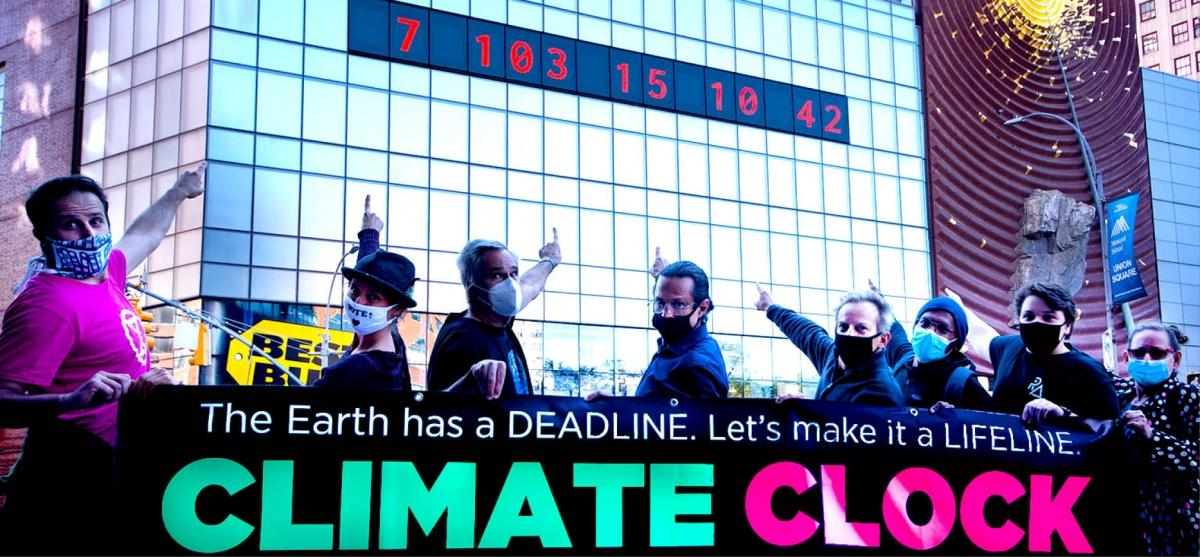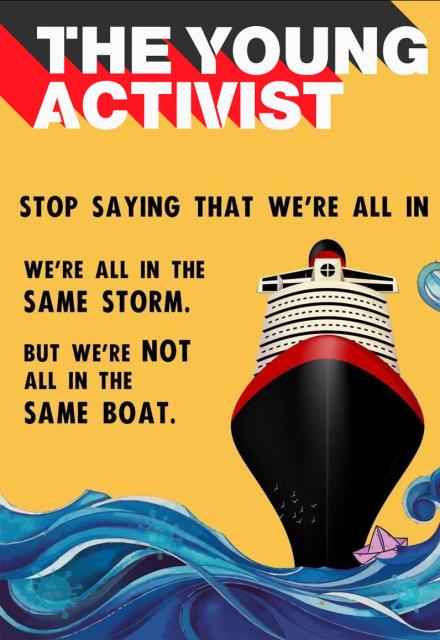REAL TALK FOR ORGANISERS
Is a BLOG series about the muddy waters of organising and social movement building. Every month we will release new articles focused on shifting organisers’ theory and practice for greater impact of their movements. Find more resources on organising and get in touch, share your ideas and feedback at comms@globalplatforms.org
Just months ago, artists unveiled a new kind of clock hovering over Union Square in New York City. The clock no longer reads the time of day, but now reads the time left for humanity to fully shift away from fossil fuels to renewable energy without causing catastrophic damage to our habitat - and to members of our own species!
As of publishing this article, we now have 7 years, 18 days, 20 hours, and 38 minutes left to finish our transition.
This realization has alarmed onlookers. The Climate Clock - also carried in its portable form by Greta Thunberg - made headlines in mainstream media across the world. In no time at all, it became the most liked post in the Washington Post’s Instagram history.
Since its unveiling, people across the world - high schoolers in Kazakhstan and Harare, musicians in Germany, museums in Turkey, activists in Glasgow, and mayors in major cities across the world, to name just a few - have begun building their own clocks. This unlikely assortment of clocksmiths is synchronizing their colossal Climate Clocks as a constant reminder that our species can no longer do business as usual.
The Climate Clock is a message that we can use to pressure leaders and decision-makers in the public and private sector, warning them of the imminent catastrophe should they fail to act, and also throwing them a lifeline to change history’s course and protect the little that’s left of our planet’s carbon budget.
If you, too, are concerned that humanity needs to sound the alarm and act to protect our future, building a towering Climate Clock might be easier than you think!

How to build a Climate Clock in your city or community
Everything begins with your ambition!
Step #1 is to fill out the Climate Clock survey and join the community’s Slack channel. Then you’ll want to check out Climate Clock’s Shared Design Principles. (As an open source project, anyone can build a Climate Clock without seeking permission, but the core team can link you up with others around the world so that you have more of the support you need to pull it off! Joining the rapidly growing network will also help you sync your clock with other Climate Clocks worldwide.)
Step #2 is to identify the local support you need to get your Climate Clock ticking. You’re going to need a team and a location; this may require getting in touch with the owner of a private building or your city council to seek their support. Enlist a few friends who are eager to make the pitch to the stakeholders that will need to buy into the idea.
Step #3 is to attend a Climate Clock Global Connection. These are brief biweekly gatherings of clocksmiths around the world where information is shared, and questions are asked and discussed. Attending these events also links you up with fellow clocksmiths. Links to these gatherings are shared with members who have already completed the above steps.
Step #4 is to enlist engineers and installers. You may need to draft a budget with them and do some local fundraising or take a cheaper shortcut of converting an existing clock in your community into a Climate Clock.
Step #5 is to go live! Assemble your public relations team and make that blast into the mainstream media with your gigantic achievement. Use this moment to call upon your government leaders and local private sector to make the shift to renewable energy and get their financial muscle behind climate justice.
Step #6 is to protect your clock. Local developers or naysayers might see it as a nuisance. Keep your local band of clocksmiths in tact and participating in global Climate Clock events. As you do this, stay active on the Climate Clock Slack channel to support groups like yours around the world.
The Climate Clock is a kind of floating signifier. It is a symbol of something much bigger than its (already-enormous) self. It tells the time remaining to make a full shift to renewable energy, yes, but it also offers us the mentality we should adopt: emergency mode.
As Climate Justice movements throughout the planet continue to sound the alarm, the Climate Clock is one tool that can drive policymakers and other leaders to listen to this alarm. The wealthiest 1% of humans cause twice as much emissions as the poorest 50% of humans. As the Climate Clock stares down upon wealthy people, it reminds them too, that there is no Planet B.


